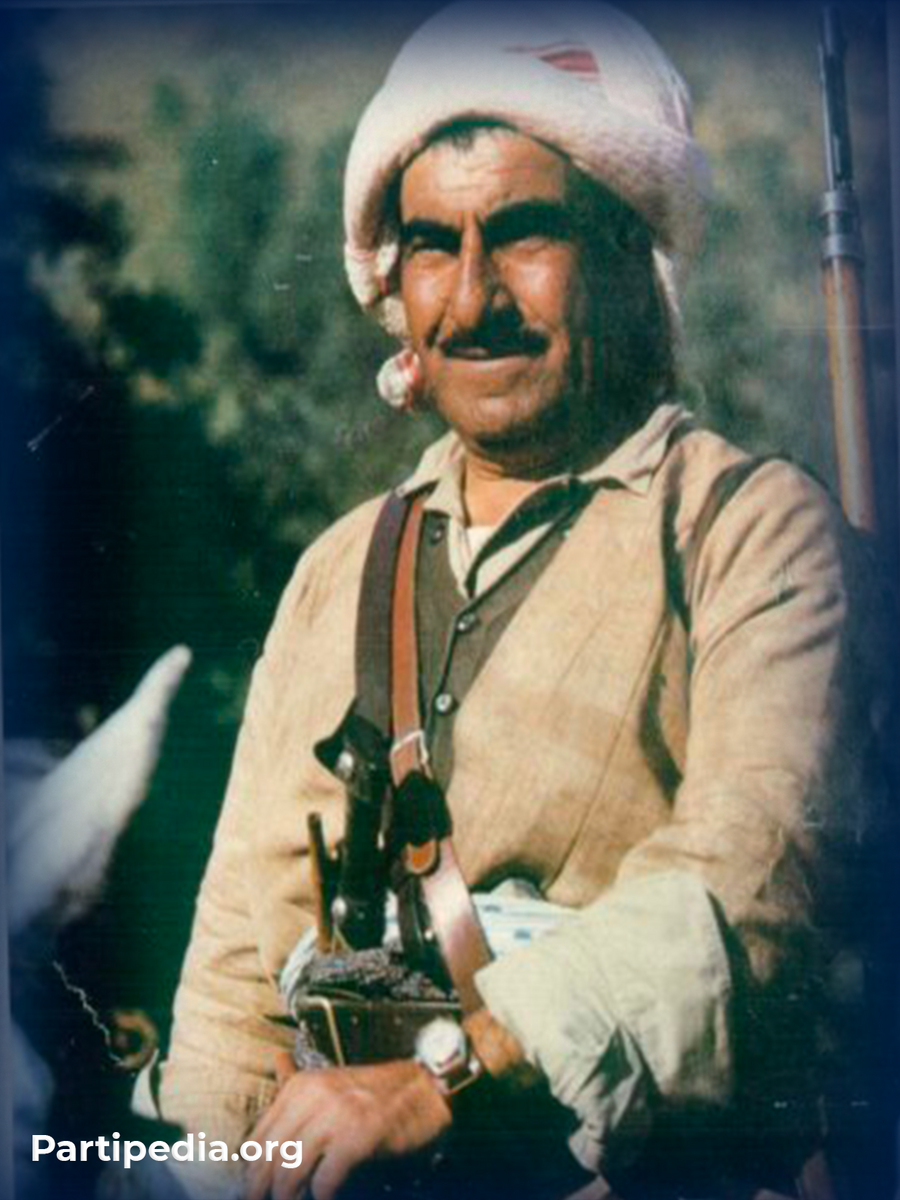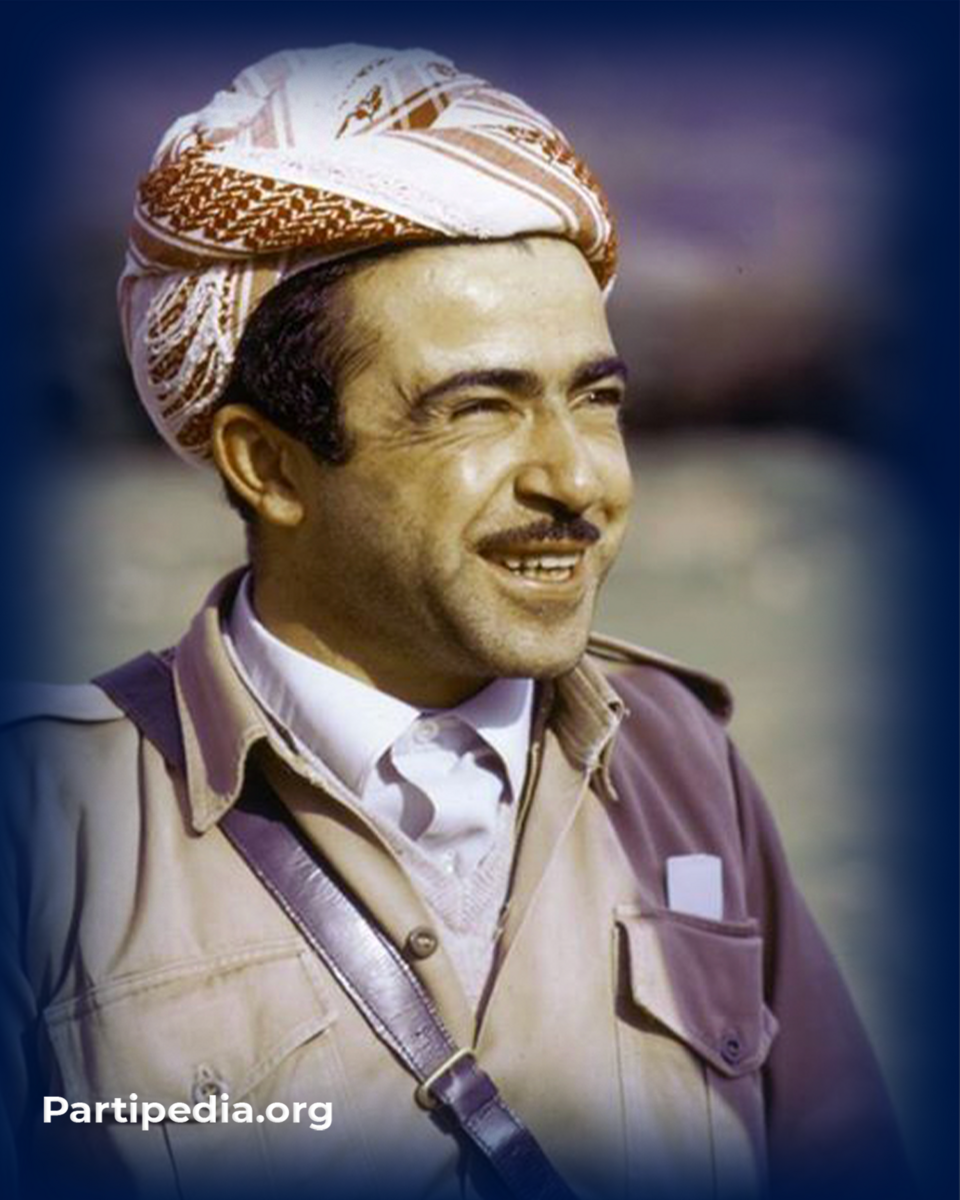The revolutionary artillery was an essential and influential part of the Peshmerga forces. In general, since 1965, it has seen a good development in providing trained officers and Peshmergas through special courses and contacts with some Iraqi army officers who were experienced in artillery.
In addition to providing mortars, artillery and ammunition, this played an important role in damaging the enemy and encouraging the Peshmerga.
At the beginning of the September Revolution, artillery was unavailable due to a lack of weapons, ammunition, and expertise in weapons, especially cannons and large-calibre mortars. Still, in 1965 the revolutionary leadership obtained eight 81mm mortars and four mortars 120 mm.
After the weapons reached the revolution, some Iraqi army officers and soldiers joined the ranks of the Peshmerga, who had received training in the army's artillery department and had expertise.
Then, to strengthen the artillery department, the revolutionary leadership sent eight people to a special course on 120mm mortars in Iran.
1- Rais Bakr Abdulkarim
2- Lieutenant Khadr Dabagh
3- Lieutenant Khalid Shamsaddin
4- Col. Nawzad Khoshnaw
5- Omar Agha Dolamari
6- Ali Dolamari
7- Hali Dolamari
8- Mustafa Rasho
After a month of the course, all the participants returned to Kurdistan. Upon their return, Iran delivered eight 120mm mortars to the revolution.
Loaded it with all the equipment and brought it back through Haji Omeran. After they returned to the front, Rais Bakr Abdulkarim was appointed head of the artillery.
The revolutionary artillery made significant progress in 1965-1975. Its weapons included 60mm mortars, 81mm US mortars, 120mm mortars, 25 rattle cannons, 122mm cannons and 155mm field cannons. During this time, many skilled artillerymen were assigned to the artillery. Some of them were Kurdish officers of the Iraqi army artillery. Still, during the negotiations between the revolutionary leadership and the government, they returned to the ranks of the Iraqi army by the decision of the leadership, such as: (Colonel Nawzad Khoshnaw, Colonel Ismail Nader, Colonel Khalid Shamsaddin, Colonel Tarq Chawshin, Colonel Ali Rubitn).
Other groups whose duty was to manage the artillery such as: (Hali Dolamari, Omar Osman Mergasuri, Arif Sheikha, Hamademin Rashashchi, Abdulrahman Beshayi, Dilawar Fayeq, Col. Khadr Alwan, Col. Anwar Miri, Col. Khadr Dabagh, Faryad Qadir, Asad Ali, Arif Jabar, Arif Asad Karwanchi, Arif Sadiq Qadir, Jalal Sulaiman Azhgayi, Mohammed Mahmoud Harki, Deputy Zabt Jalal, Deputy Zabt Jamal, Mam Tofiq Dargalayi, Mustafa Dolamari).
In the summer of 1967, another artillery course was opened at the military school in Choman, under the supervision of Col. Khadr Alwan, a skilled officer and expert in the field of artillery and military maps of the Iraqi army. He was from the Iraqi Communist Party. In this course, the participants learned how to use 25-round cannons, 60, 82, and 120 mm mortars, bazookas and other weapons. Using cannons to support his forces, attack enemy positions and hide cannons.
Obviously, due to the importance of artillery by the revolutionary leadership, it grew day by day.
Various courses were opened on 81mm and 120mm mortars, injuries and military maps. In 1970-1974, several other courses were opened to learn the 25-rattle cannon and 122mm cannon and 155mm.
In April 1974, a 40-day course of 120mm and 60mm mortars was conducted in Ghala with the participation of 25 Peshmergas.
In May 1974, another course was opened to learn the 122mm cannon; in June, another course was opened to learn the 122mm bow cannon under the supervision of Col. Faraidoon.
In the summer of 1974, several Peshmergas were sent to Iran to participate in a course on how to use cannons at the Paswa military base, which Iranian and foreign teachers trained. After completing the course, they returned to Kurdistan, and some of them became teachers of the revolutionary artillery under the supervision of First Lieutenant Kamal Pedawi.
When the war resumed in 1974, the revolutionary artillery strongly supported all forces and battalions. At that time, there were only six large 25-rattle cannons with 812 such cannons. 75mm cannons and 120mm mortars were used during the attacks, and the 25rattle cannon.
Each type of artillery had unique names, that were ordered by wireless for the battlefields, for example, Shamal 1, 2, 3, 4, 5, 6 for 75mm cannons, Barzo 1, 2, 3, 4, 5, 7 for 120mm mortars, also named lafaw 1, 2, 3, 4, was used for the 25-rattle cannon. Finally, the artillery played a significant role in attacking the Iraqi army bases and military bases throughout Kurdistan, especially in the area of Balakayety.
The role of the Revolutionary artillery in some battles and legends
In 1965, in the Dastan of Mount Korak, the artillery shelled three Iraqi army positions, causing heavy damage to all three positions, and the Peshmerga was able to capture two of them.
In 1965, the revolutionary artillery shelled the Ranya military base, causing heavy damage to the military base and setting fire to the ammunition depot.
In 1974, when the war resumed, the revolutionary leadership decided to capture the military bases of Mount Goraz and expel the Iraqi army.
The revolutionary artillery played an essential and decisive role in this campaign, especially in the last base, where the soldiers were defending vigorously.
However, when the artillery hit the target and caused heavy damage to the soldiers of the Rabaya, the Peshmerga captured the Rabaya in a short time without causing any casualties.
In 1974, the revolutionary leadership ordered the capture of the Spilk military base in the west of Khalifan town, but the Peshmerga was unsuccessful in this operation. Therefore, it was decided to shell heavily. Because many soldiers were preparing to attack and advance, for this purpose, the artillery commander Hali Dolamari was directly assigned. Two cannons were delivered to Khalan Biao overnight to carry out the order.
The artillery commander and the commander of the 2nd Battalion of Zozk were shelling the Bradost Mountains. At sunrise, the artillery was ordered to start working. After intense shelling, the barracks suffered heavy damage, such as explosions and fuel tanks inside the arsenal.
In 1974, during the Iraqi army's attack on the Omaragha Strait in the Diyana Plain, the Artillery of the Revolution played a very important role in defeating the attack. It caused heavy damage to the Iraqi army, and the attack was defeated.
Resources:
1. موقەدەم ڕوکن سەنگەر ئیبراهیم خۆشناو: ڕووداوە سەربازییەکانى شۆرشى ئەیلوول، ١٩٧٠-١٩٧٥، چاپى یەکەم، هەولێر، ٢٠٢٢.
2. ملازم خدر عەبدولڵا دەباغ: بیروەریەکان و تۆپخانەى شۆرشى ئەیلوولى مەزن- چاپى سێیەم – چاپخانەى رۆشنبیرى – هەولێر، ٢٠٢٠.
3. ئیسماعیل گوندەژۆرى: شۆرشى ئەیلول لە باڵەکایەتى، چاپخانەى رۆژهەڵاات، چاپى یەکەم، ٢٠١٨.
4. عەبدوڵا ڕەحمان مەلازادە: شێوەى پێکهاتەى سەربازى شۆڕشی ئەیلوولى مەزن، چاپى دووەم، دهۆک، ٢٠١٢.
5. عومەر عوسمان: ژیانى کوردێک، چاپخانەى موکریانى، چاپى دووەم، بەرگى یەکەک و دووەم، ٢٠٠٨.
6. دیمانه: گۆرگیس یهلدا تهرخان، پێشمهرگهی شۆرشی ئهیلوول، ئهرشیفی ئینسكلۆپیدیا.
7. غازی عادل گهردی: پێشمهرگهیهك له خزمهت بارزانیدا ... حهجی بێڕۆخی، بهرگی یهكهم، چاپی دووهم، ٢٠٢١.







